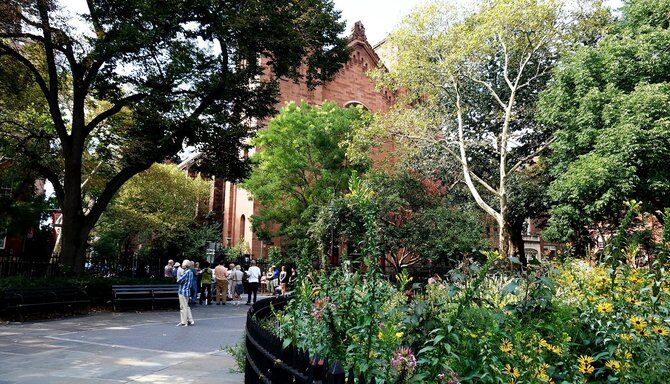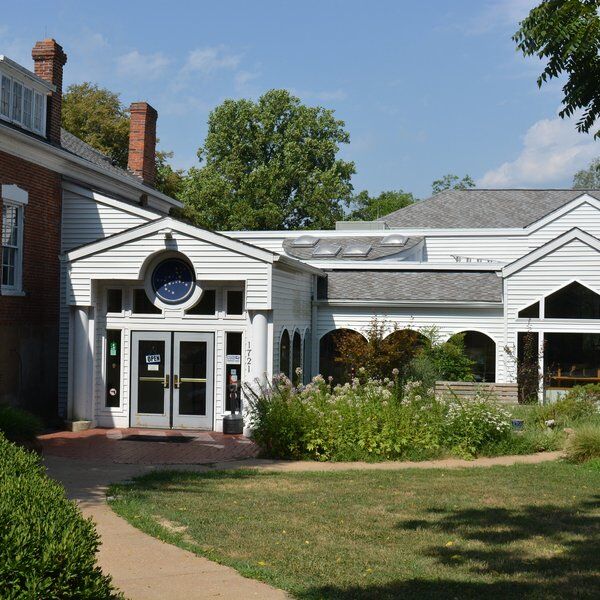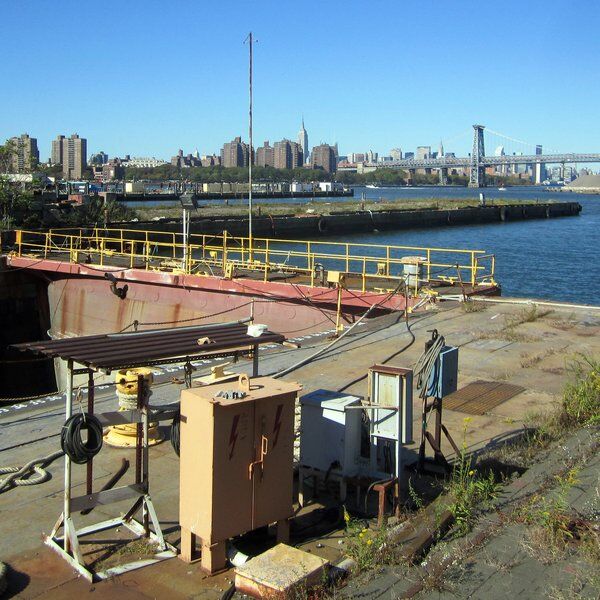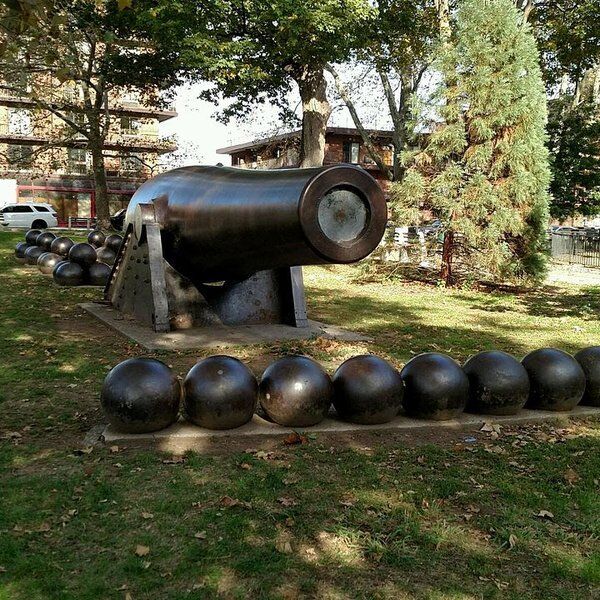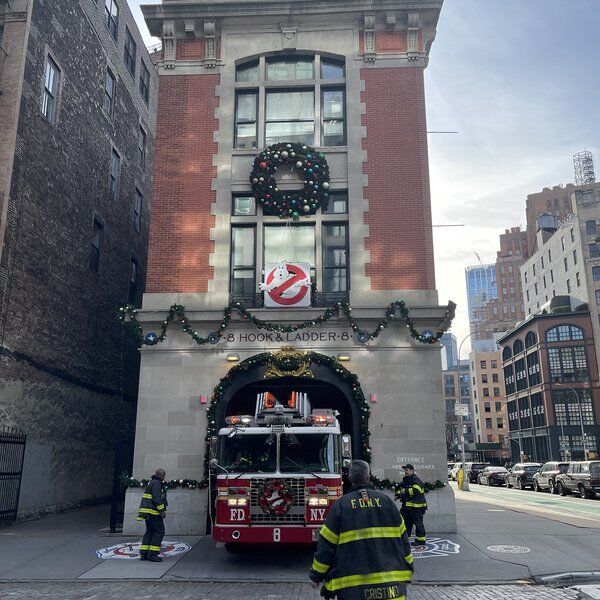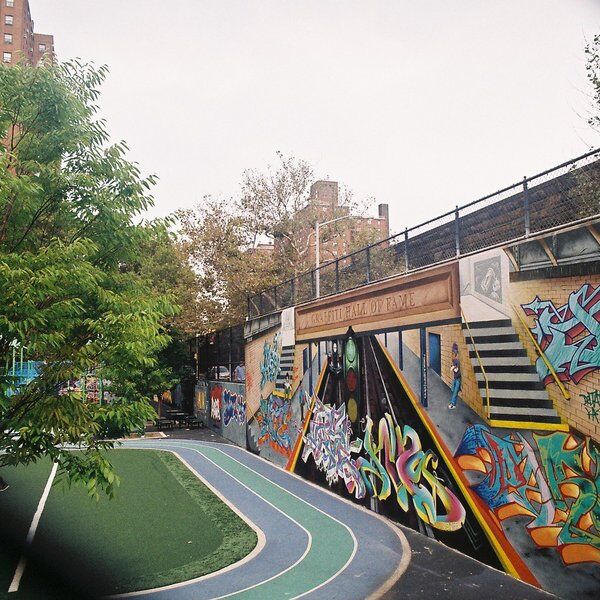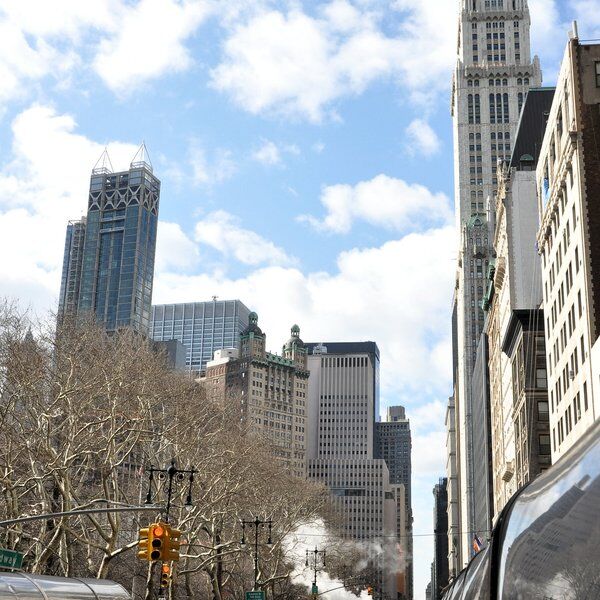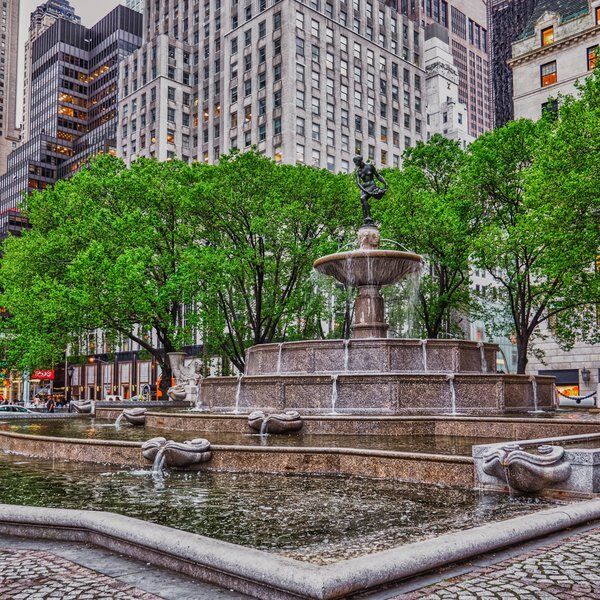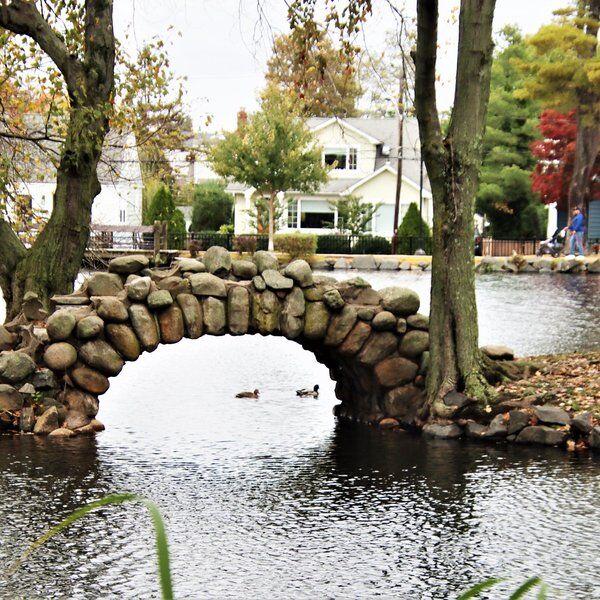Discover Stuyvesant Square Park
Originally part of a family farm and the site of an illustrious mansion, Stuyvesant Square Park, between East 15th and East 17th Streets, is now an area of public parkland in the heart of Manhattan. Locals and tourists visit the park for its well-manicured flower beds, to stroll along its quaint paved paths, or to admire the historic cast-iron fence that still hugs the park. It’s a perfect spot to sit down with your favorite coffee, dive into a good book, or simply watch the world go by as the park’s rich past whispers through the rustle of leaves.
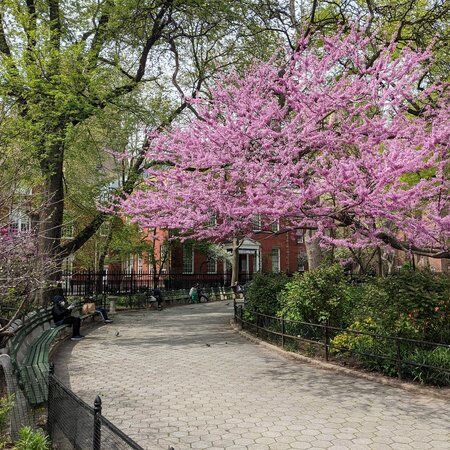
The History of Stuyvesant Square Park
Long before it became the beloved parkland we know today, the land that houses Stuyvesant Square Park was part of a large family farm. This area, stretching from the Bowery to the East River and from 3rd to 14th Street, once served as the backdrop for the original Stuyvesant family mansion. Here’s how this fascinating patch of Manhattan evolved over the centuries:
Family Farm to Public Park
Back in 1836, Peter Gerard Stuyvesant (the great-great-grandson of New Netherland’s renowned leader, Peter Stuyvesant) and his wife, Hellen Rutherford, set aside four acres of their sprawling farm. They then sold it to the City of New York for a symbolic five dollars, on the condition that a fence be erected around it. Originally dubbed Holland Square, the park eventually took on the name Stuyvesant Square Park in honor of its benefactor.
Legal Battles and Landmarks
For a while, the park lay barren until an 1839 lawsuit from the Stuyvesant family pushed the city to develop the area. In 1847, New York City finally installed a magnificent cast-iron fence—one of the oldest in the city—encircling the park. The installation of this fence marked the true beginning of the park’s transformation from an empty tract to a community treasure.
By 1850, further improvements had been made to the park. The landscape was completed with the addition of two fountains. The park was now ready to officially open its gates to the public.
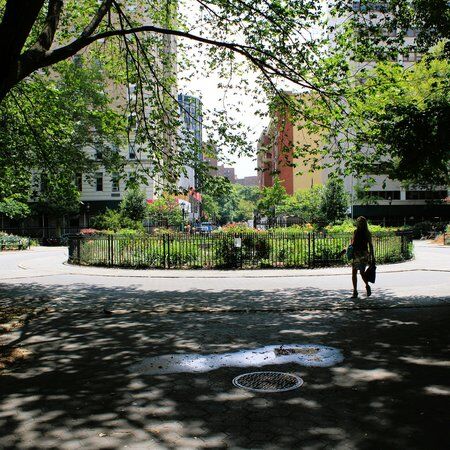
Renovations in the Park
Over the years, Stuyvesant Square Park has undergone multiple renovations to preserve its historic details while adapting to the needs of modern urban life. Notable refurbishments occurred in the 1930s, when landscape architect Gilmore D. Clarke reimagined the park's 19th-century design and added new amenities such as comfort stations, playgrounds, and public restrooms.
Subsequent restorations in the 1980s and renovations between 2006 and 2016 focused on:
- Restoring Fountains and Sidewalks: Reconstructing the two historic fountains, installed as early as 1850, and the original bluestone sidewalks. As well as restoring the lawns and caring for the century-old trees.
- Preserving the Cast-Iron Fence: Maintaining and restoring the decorative cast-iron fence that has become a beloved symbol of the park.
- Enhancing Visitor Comfort: Installing new benches and updating amenities to ensure the park remains a welcoming space for all.
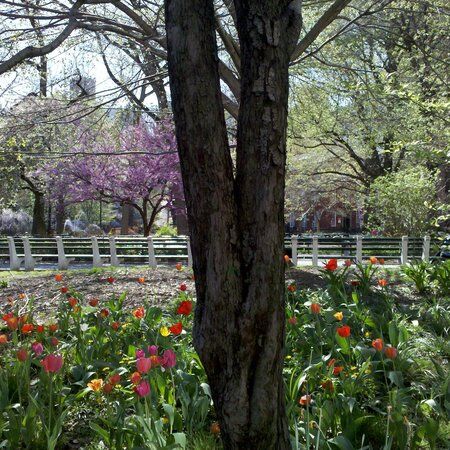
Features of Stuyvesant Square Park
Stuyvesant Square Park is overflowing with history, architectural flair, and natural beauty.
Row Houses
The park’s design as a 19th-century square provides a refreshing break from the rigid grid of Manhattan’s streets. By the early 1900s, the area around the park had developed into one of New York’s fashionable addresses, attracting influential figures and residents.
Today, wandering around Stuyvesant Square Park puts people in touch with early architecture these influential individuals would have resided in. Along the park’s perimeter, you’ll notice stately Greek Revival row houses that have stood for nearly two centuries. Alongside these, you'll see examples of Gothic Revival, Italianate, and French Renaissance styles. These buildings create a picturesque setting that reflects the rich history of the area.
As well as the row houses the park is bordered by historic churches and classic brownstones. Buildings like St. George’s Church and the Friends Meeting House on Rutherford Place are reminders of the area’s long-standing cultural significance.
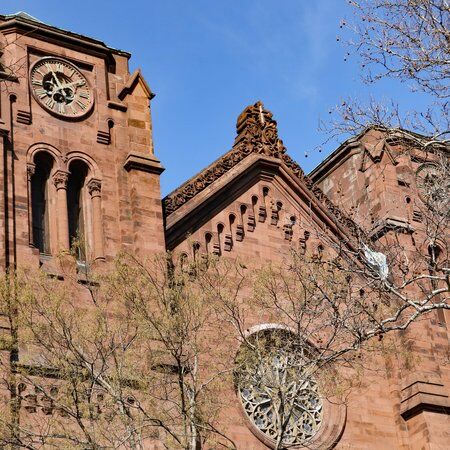
Park Monuments
Art and history meet in the park’s remarkable sculptures:
- Peter Stuyvesant Statue: Crafted by Gertrude Vanderbilt Whitney and unveiled in 1941, this statue commemorates Director-General Peter Stuyvesant, complete with his iconic peg leg. Donated by the Netherland America Foundation, it is thoughtfully placed facing the nearby Friends Meeting House, hinting at the intriguing historical relations between Stuyvesant and the Quakers.
- Antonín Dvořák Memorial: This bronze sculpture by Croatian-American artist Ivan Mestrovic honors the celebrated Bohemian composer known for "Music from the New World." Originally unveiled in 1963 and relocated to the park in 1997, the memorial ties the cultural heritage of the neighborhood to its artistic spirit.
Monarch Butterflies in Stuyvesant Square Park
The park also offers a subtle natural attraction. Each year, as part of their long 2,100-mile migration, monarch butterflies find a temporary respite in the park. These butterflies are often seen resting on the butterfly bushes (Buddleia davidii), adding a seasonal touch of color that underscores the park’s peaceful atmosphere.
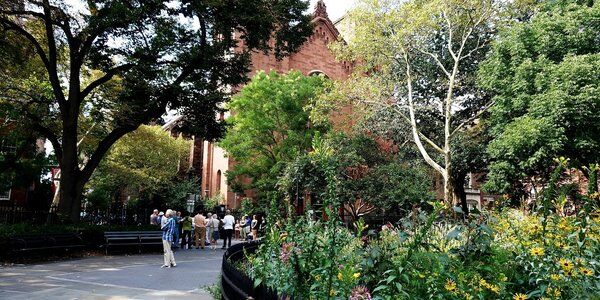
Visiting Stuyvesant Square Park
Here are some tips and highlights to consider when planning your trip to Stuyvesant Square Park:
What to Expect
- Facilities & Wi-Fi: The park is equipped with modern conveniences, including Wi-Fi hotspots, making it a great spot to catch up on emails or share your snaps on social media.
- Dog-Friendly Areas: Bring your furry friend along! There are dedicated dog-friendly zones where your pet can stretch its legs.
- Highlights: Don’t miss the Antonín Dvořák statue and the monarch butterflies.
- Great Trees and Relaxation Spots: Take a moment under the shade of the park’s venerable trees, enjoy a picnic, or simply relax on a bench and soak in the history that surrounds you.
Insider Tips
- Visit in Spring: The best time to visit Stuyvesant Square Park is during the spring when the greenery is lush and the weather is just right for an outdoor escape.
- Be Prepared: Keep an eye out for gate latches (they can be a bit hefty) and consider bringing your own waste bags to help keep the park in good condition.
- Explore the Neighborhood: After a leisurely stroll in the park, venture out to discover nearby historic buildings, cafes, and other hidden gems of the Stuyvesant Square district.
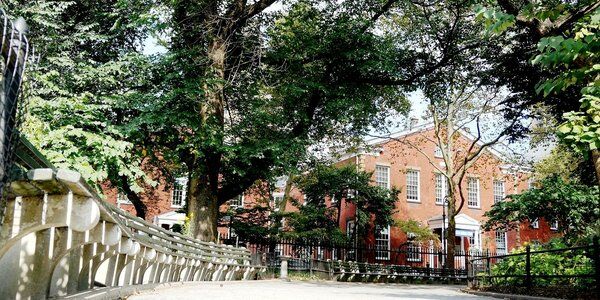
Explore Beyond Stuyvesant Square Park with CityDays
At CityDays, we believe that every corner of New York City is bursting with history, adventure, and stories waiting to be uncovered. That’s why we urge you not to stop at just Stuyvesant Square Park!
Our scavenger and treasure hunt tours are the perfect way to explore NYC’s neighborhoods while having a blast. Ideal for team-building exercises, these tours take you on an interactive journey through the city—solving clues, snapping photos, and uncovering hidden landmarks.
Clues will lead you to the big sights and those that you'd walk straight past.
For more information about our New York Hunts then click here: NYC Scavenger & Treasure Hunts | CityDays.
